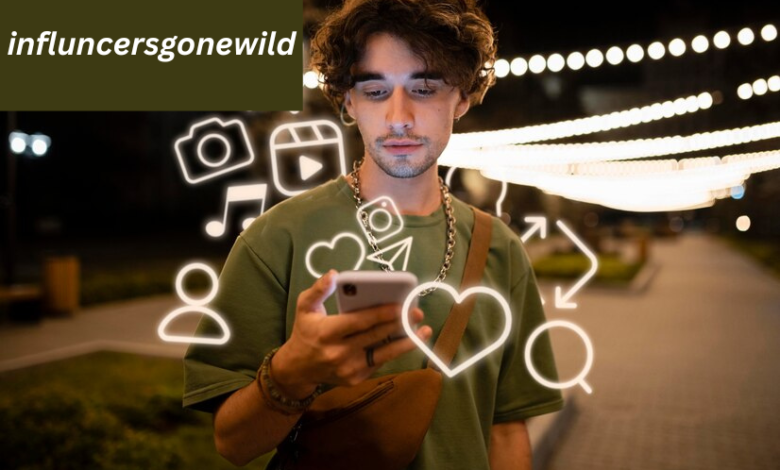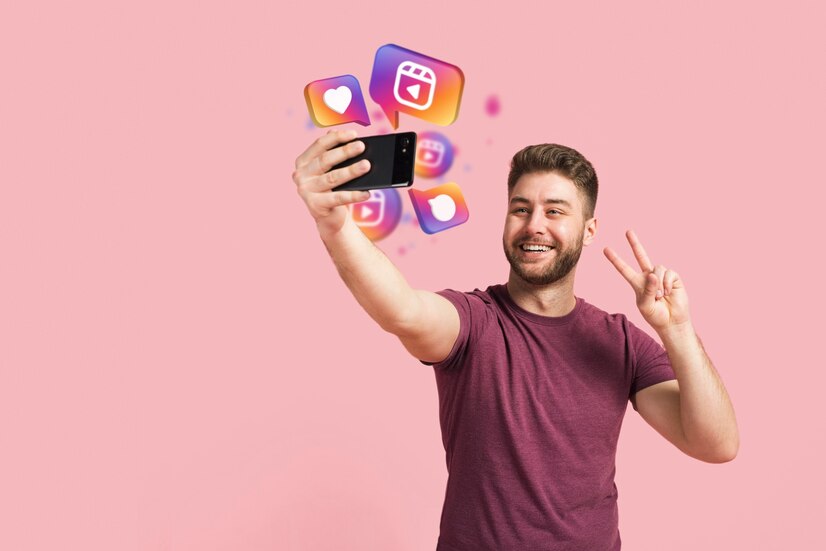InfluencersGoneWild: The Dark Side of Social Media Fame

In the age of social media dominance, influencers have become the new celebrities. Platforms like Instagram, TikTok, and YouTube have turned ordinary individuals into global stars, wielding immense power over trends, consumer behavior, and even political opinions. However, with great influence comes great responsibility—and sometimes, great controversy. The phenomenon known as “InfluencersGoneWild” highlights the darker side of internet fame, where scandals, reckless behavior, and ethical dilemmas take center stage.
From outrageous stunts to public meltdowns, influencers often push boundaries to stay relevant, sometimes at the cost of their reputation—or even their safety. This article explores the rise of InfluencersGoneWild, the psychology behind their actions, the consequences they face, and what this trend means for the future of social media.
1. The Rise of Influencer Culture: Fame in the Digital Age
Social media has democratized fame, allowing anyone with a smartphone and charisma to build a massive following. Unlike traditional celebrities, influencers often cultivate a sense of relatability, making their audiences feel like they are part of their daily lives. However, this accessibility comes with a downside—the pressure to constantly engage followers leads some influencers to extreme measures.
The term “InfluencersGoneWild” refers to those who cross the line, whether through dangerous challenges, offensive content, or public scandals. The quest for viral moments can result in reckless behavior, as influencers prioritize clicks and engagement over ethics. The rise of platforms like TikTok, where trends spread at lightning speed, has only amplified this phenomenon, pushing creators to take bigger risks for attention.
2. Why Do Influencers Go Wild? The Psychology Behind the Chaos
What drives influencers to engage in outrageous behavior? Psychologists suggest several factors:
The Addiction to Virality
Social media algorithms reward engagement, meaning the more shocking or controversial a post is, the more likely it is to go viral. This creates a feedback loop where influencers feel compelled to push boundaries further to maintain relevance.
The Pressure to Stay Relevant
The internet moves fast, and today’s trending star can become tomorrow’s forgotten meme. Many influencers fear losing their audience, leading them to participate in risky trends or create drama to stay in the spotlight.
Financial Incentives
Brand deals, sponsorships, and ad revenue depend on high engagement. For some influencers, the temptation to generate buzz—even through negative attention—outweighs the potential backlash.
Lack of Accountability
Unlike traditional media personalities, many influencers operate without oversight. Without editors, PR teams, or network guidelines, they may not fully consider the consequences of their actions before posting.
3. Notable InfluencersGoneWild Scandals
Several high-profile cases have defined the InfluencersGoneWild trend. Here are some infamous examples:
The Fyre Festival Disaster
Billy McFarland and Ja Rule’s ill-fated Fyre Festival, promoted by top influencers like Kendall Jenner and Bella Hadid, became a symbol of influencer culture gone wrong. The event, marketed as a luxury experience, turned into a chaotic disaster, leading to lawsuits and fraud charges.
TikTok Challenges Turned Dangerous
From the “Tide Pod Challenge” to the “Skull Breaker Challenge,” viral trends have sometimes led to serious injuries or even deaths. Influencers who participate in or promote these challenges often face severe backlash.
Public Meltdowns and Cancel Culture
Some influencers, like Logan Paul (who filmed a suicide victim in Japan’s “Suicide Forest”) or Tana Mongeau (known for her controversial parties and feuds), have faced massive public outrage, leading to temporary deplatforming or brand withdrawals.
Fake Giveaways and Scams
Several influencers have been caught running fake giveaways, scamming followers out of money, or promoting fraudulent products—only to face legal consequences later.
4. The Consequences of Going Too Far
While some influencers recover from scandals, others face long-term damage:
Loss of Sponsorships & Revenue
Brands quickly distance themselves from controversial figures, leading to lost income. For full-time influencers, this can be devastating.
Legal Troubles
From fines to arrests, reckless behavior can have real-world legal consequences. Influencers like Danielle Bregoli (Bhad Bhabie) and Austin McBroom have faced lawsuits over fraudulent schemes.
Mental Health Decline
The pressure to stay relevant, coupled with public scrutiny, has led many influencers to burnout, anxiety, and depression. Some, like influencer Etika, have tragically taken their own lives after prolonged online harassment.
Permanent Damage to Reputation
Once trust is broken, it’s hard to regain. Many canceled influencers struggle to rebuild their careers, forced to pivot to smaller platforms or leave social media entirely.
5. Can Influencer Culture Be Fixed?
The InfluencersGoneWild trend raises important questions about accountability in the digital age:
Should Platforms Enforce Stricter Rules?
While platforms like Instagram and TikTok have community guidelines, enforcement is inconsistent. Should there be harsher penalties for harmful content?
The Role of Followers
Audiences play a part—when they engage with controversial content, they incentivize more of it. Should fans be more critical of the influencers they support?
Ethical Influencing: A New Wave?
Some creators are pushing for transparency, authenticity, and responsible content. Will this shift redefine influencer culture, or will shock value always dominate?

Conclusion
The InfluencersGoneWild phenomenon is a byproduct of a hyper-connected, engagement-driven digital landscape. While social media offers incredible opportunities for creativity and entrepreneurship, it also tempts some to prioritize fame over ethics. As audiences and platforms become more aware of these issues, the future of influencer culture may depend on striking a balance between entertainment and responsibility.
For now, the wild antics of influencers will continue to fascinate, outrage, and sometimes even educate—reminding us that internet fame is a double-edged sword.
Frequently Asked Questions (FAQs)
1. What does “InfluencersGoneWild” mean?
It refers to influencers who engage in extreme, reckless, or scandalous behavior for attention, often leading to public backlash or consequences.
2. Why do influencers take such big risks?
The pressure to stay relevant, financial incentives, and the addictive nature of virality drive some to push boundaries beyond reasonable limits.
3. Have any influencers faced legal trouble for their actions?
Yes—some have been sued, fined, or even arrested for fraud, dangerous challenges, or promoting scams.
4. Can canceled influencers make a comeback?
Some do by rebranding or apologizing, but others struggle to regain trust and lose their careers permanently.
5. How can audiences support ethical influencers?
By engaging with authentic, responsible creators and holding problematic influencers accountable through criticism or disengagement.
6. Will social media platforms crack down on reckless behavior?
As public pressure grows, platforms may enforce stricter rules, but the effectiveness remains to be seen.